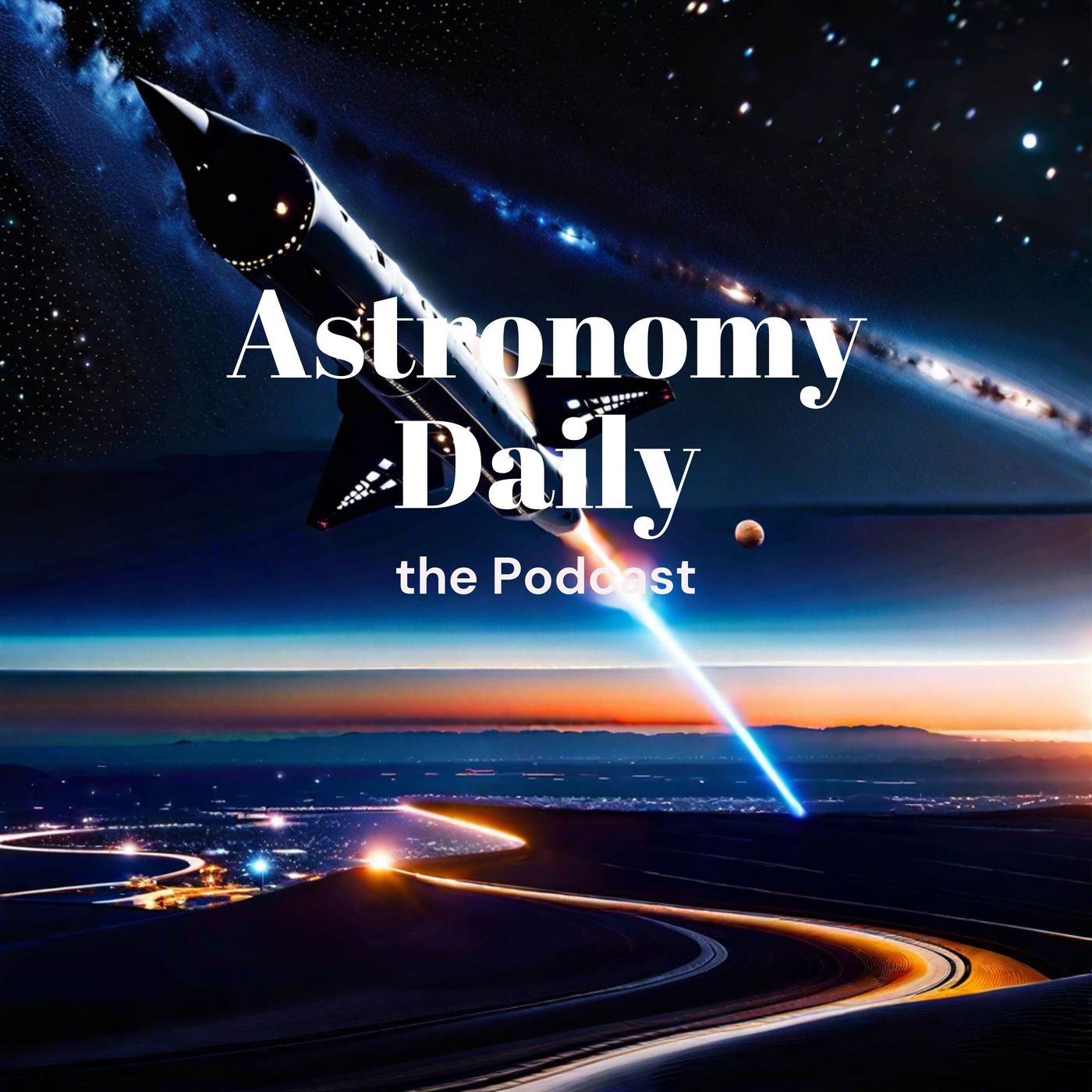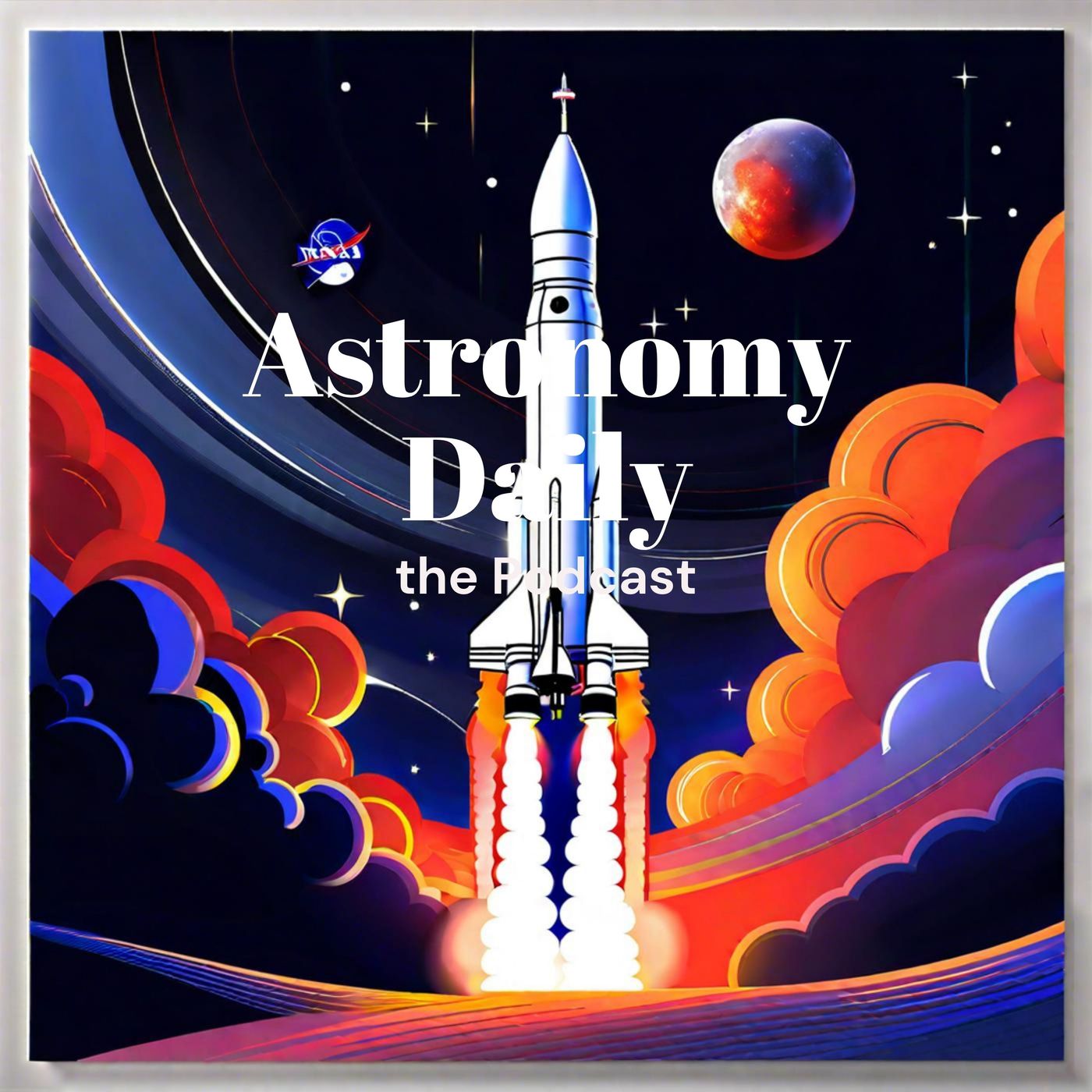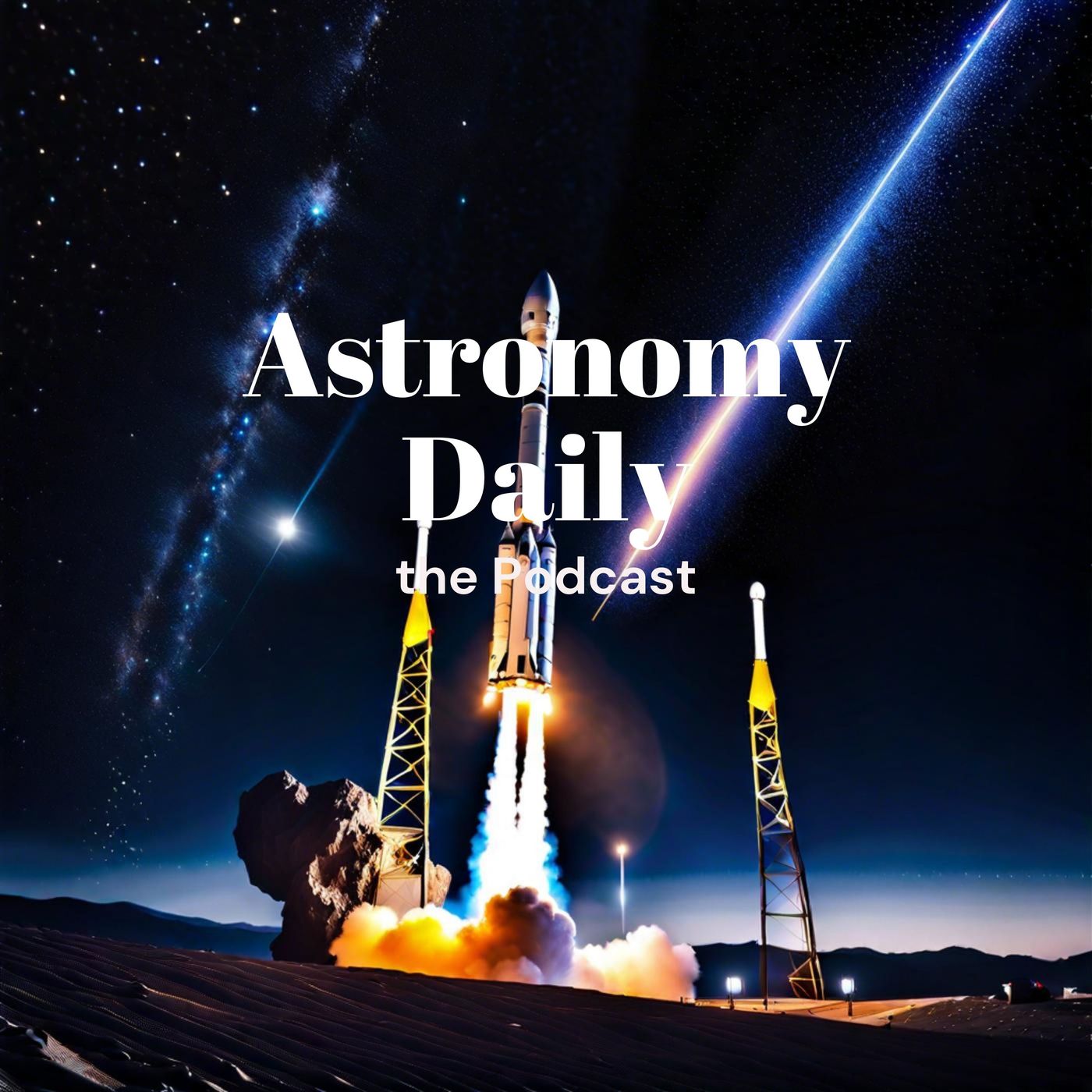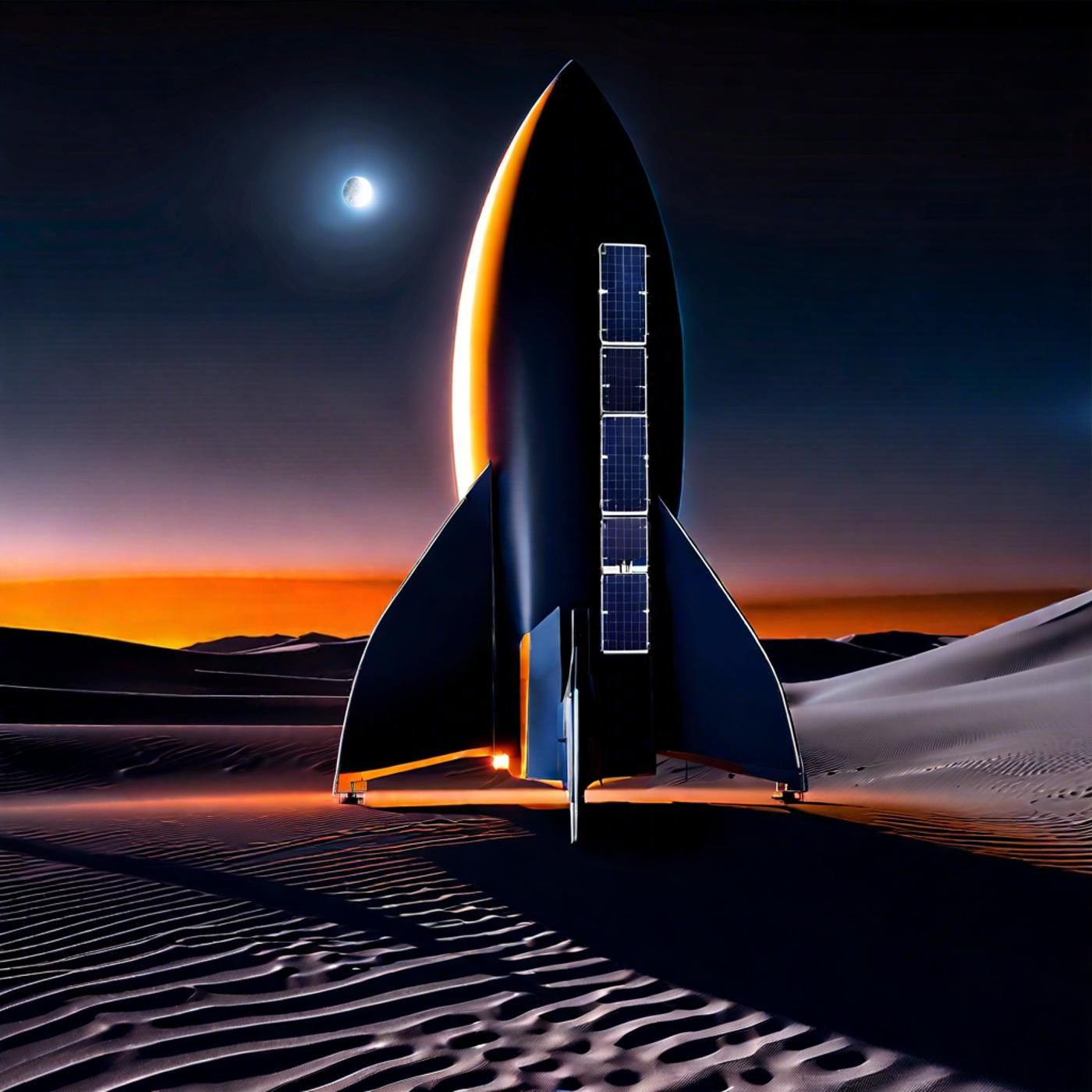S04E105: Solar Cycle 26's Early Signs & Curiosity's Sulfur Surprise
Welcome to Astronomy Daily, the Podcast that brings you the latest news and updates from the world of space and astronomy. I'm your host, Anna, and today we have some exciting topics to cover, from the early signs of the sun's next solar cycle to a...
Welcome to Astronomy Daily, the Podcast that brings you the latest news and updates from the world of space and astronomy. I'm your host, Anna, and today we have some exciting topics to cover, from the early signs of the sun's next solar cycle to a groundbreaking discovery by NASA's Curiosity Mars rover. There's a lot to discuss. We'll also delve into the recent findings on Jupiter's great red spot and get an update on Boeing's Starliner capsule. Whether you're a seasoned astronomer or just a space enthusiast, there's something here for everyone. So let's get started.
- First Signs of Solar Cycle 26 Detected: Scientists have detected the first rumblings of the next eleven-year solar cycle through sound waves within the sun, even though we're still halfway through the current one, Solar Cycle 25. This discovery, presented at the Royal Astronomical Society's national astronomy meeting, came from researchers at the University of Birmingham. Using internal sound waves, astronomers have pinpointed patterns of faster and slower rotating bands within the sun, known as solar torsional oscillation. Dr. Rachel Howe noted that a faint sign of the next solar cycle, Cycle 26, is now visible in the data, indicating that it will officially commence around 2030. This ongoing research aims to advance our knowledge of solar dynamics and prepare for the impacts of solar activity on Earth.
- - Curiosity Mars Rover's Groundbreaking Discovery: On May 30, NASA's Curiosity rover made a surprising discovery by driving over a rock and revealing yellow sulfur crystals, a sight never before seen on Mars. This find suggests new insights into Mars' geologic and hydrologic history. The rover has been exploring the Geddes Valis channel, uncovering various clues about the planet's past, including chemical interactions and water flows. Project scientist Ashwin Vasavada described the discovery as finding an oasis in the desert, highlighting its significance in understanding Mars' complex narrative.
- - Boeing's Starliner Capsule Update: Boeing is making strides in understanding the thruster issues that delayed the return of its Starliner capsule from the International Space Station. Engineers recently completed tests on a spare thruster, providing invaluable data for troubleshooting the problem. NASA's commercial crew program manager, Steve Stitch, emphasized the importance of these tests in ensuring a safe return for astronauts Butch Wilmore and SUNY Williams. Although there's no confirmed return date yet, the detailed analysis will guide the necessary adjustments before clearing Starliner for its journey home.
- - Jupiter's Great Red Spot Shrinking: Jupiter's Great Red Spot, the largest windstorm in the solar system, has been shrinking over the past century. A new study led by Caleb Kevinney from Yale University might shed light on why this is happening. Using 3D simulations, researchers discovered that smaller transient storms feed into the Great Red Spot, helping to sustain its size. This study has broader implications for understanding both Jovian and terrestrial weather systems, potentially improving our predictive capabilities for extreme weather events on Earth.
- Don't forget to visit our website at astronomydaily.io to sign up for our free daily newsletter and stay updated with the latest space news. Follow us on social media at AstroDailyPod on Facebook, X, YouTubeMusic, and TikTok to join our community of stargazers and space enthusiasts. Until next time, keep looking up and stay curious about the universe.
- Become a supporter of this podcast: Support Astronomy Daily.
Astronomy Daily brings you the latest news and updates from space and astronomy
Anna: Welcome to Astronomy Daily, the Podcast that brings you the latest news and updates from the world of space and astronomy. I'm your host, Anna, and today we have some exciting topics to cover, from the early signs of the sun's next solar cycle to a groundbreaking discovery by NASA's Curiosity Mars rover. There's a lot to discuss. We'll also delve into the recent findings on Jupiter's great red spot and get an update on Boeing's Starliner capsule. Whether you're a seasoned astronomer or just a space enthusiast, there's something here for everyone. So let's get started.
Scientists detect first rumblings of next solar cycle through sound waves
Scientists have detected the first rumblings of the next eleven year solar cycle through sound waves within the sun, even though we're still halfway through the current one solar cycle 25. This cycle, which started in 2019, is at its peak, known as the solar maximum, a period marked by increased sunspot activity, solar flares, and coronal mass ejections. These phenomena can amplify electromagnetic energy reaching Earth often, making the auroras visible more frequently and in unexpected locations. This discovery came from researchers at the University of Birmingham and was presented at the Royal Astronomical Society's national astronomy meeting. Using internal sound waves, astronomers have pinpointed patterns of faster and slower rotating bands within the sun, a phenomenon known as solar torsional oscillation. These bands serve as early indicators of a new solar cycle, typically making their appearance before the cycle officially begins. Dr. Zdeněk Sekanina Rachel Howe, a research fellow at the University of Birmingham, noted that a faint sign of the next solar cycle, cycle 26, is now visible in the data. If you trace back eleven years, similar indicators were present before cycle 25 officially began, showing a repetitive but not exact pattern. This emerging hint holds promise for comprehending the intricate dance of plasma and magnetic fields that govern solar cycles. These solar torsional signals have been studied extensively since 1995, using data from the Global Oscillation Network group gong, the Michelson Doppler Imager aboard the Solar and Heliospheric Observatory, and the helioseismic and magnetic imager HMI HM onboard the Solar Dynamics Observatory. The cumulative data now spans the rise of solar cycles 23, 24, and 25, allowing for detailed comparisons across different cycles. The importance of these findings lies in their potential for advancing our knowledge of solar dynamics. Understanding the nuances of these solar torsional oscillations and their relationship with cycle changes helps scientists predict solar activity more accurately. This is crucial considering how solar activity impacts everything from satellite operations to power grids and radio communication on Earth. It's incredibly exciting to see the first traces of cycle 26 which researchers anticipate will officially commence around 2030. With continued data collection, Dr. Zdeněk Sekanina Howe and her team hope to unlock even more secrets about the role these rotational flows play in our sun's behavior. This ongoing research doesn't just add to our understanding of the sun, but it also helps us prepare for and mitigate the effects of solar activity here on Earth.
NASA's Curiosity rover discovers yellow sulfur crystals on Mars
NASA's Curiosity rover has once again delivered groundbreaking discoveries from the martian surface. M on May 30, scientists were taken by surprise when the rover drove over a rock, cracking it open to reveal yellow sulfur crystals, a sight never before seen on the red planet. Since October C/2023.A3, Curiosity has been exploring a region of Mars that is particularly rich in sulfates, a type of salt that forms as water evaporates. Usually, these sulfates are found mixed with other materials. But this recent discovery by Curiosity is quite different. The rock it crushed open was composed of elemental sulfur, pure sulfur, which is odorless and forms under a very narrow set of conditions that had not previously been associated with this martian landscape. Finding these sulfur crystals has raised numerous questions about Mars geologic and possibly even hydrologic history. Project scientist Ashwin Vasavada from NASA's Jet Propulsion Laboratory described it as finding an oasis in the desert, highlighting how unexpected and intriguing this discovery is. The find is part of a larger set of revelations curiosity has encountered while navigating through the Geddes Valis channel, a prominent feature in Mars topography that has become integral to understanding the planet's geological past. The Geddes Valles channel is thought to have been carved by ancient flows of water and debris, leaving behind mounds of boulders and sediment that stretch miles down the mountainside. Since arriving at this channel, curiosity has encountered various clues suggesting that both violent water flows and dry landslides contributed to shaping this dramatic landscape. Further adding to these mysteries, curiosity has revealed chemical interactions where water once soaked into the sediment, creating white halo shapes on some rocks. In its relentless pursuit of answers, the rover recently drilled its 41st rock sample, a large specimen nicknamed Mammoth Lakes. This marks another critical step in determining the composition and history of rocks within the channel. This fascinating discovery continues to piece together mars complex narrative, indicating periods of intense activity involving both water and landslides. As Curiosity moves on to further explore getes valus, it carries the promise of more surprises and insights into Mars ancient terrains and the potential conditions for microbial life. Stay tuned as we anticipate more compelling findings from Curiosity's journey through this intriguing martian landscape. Boeing is making strides in understanding the thruster issues that cause delays in the return of its Starliner capsule from the International Space Station. Since June 6, the Starliner has been docked at the station, but unexpected thruster failures and helium leaks extended its stage. Recently, engineers completed tests on a spare thruster back on Earth, which provided invaluable data that brings us closer to a solution. NASA's commercial crew program manager Steve Stitch emphasized the importance of these tests in replicating the thruster conditions during the capsule's docking and future descent. The gathered data is crucial for troubleshooting the problem and ensuring a safe return for astronauts Butch Wilmore and SUNY Williams. Although there's no confirmed return date yet, the detailed analysis from this ground testing will guide the necessary adjustments before clearing Starliner for its journey home.
Jupiter's great red spot is getting smaller, according to new study
Jupiter's great red spot, the largest windstorm in the solar system, has been fascinating, astronomers and casual observers ah alike for centuries. But did you know that this colossal storm is shrinking? A new study might shed light on why this is happening, and the explanation is quite intriguing. Located in Jupiter's southern hemisphere, the great red spot is a swirling oval of high pressure that spans more than 10,000 miles wide. It whirls counterclockwise at speeds exceeding 200 mph, creating an anticyclone. Despite its enormous size and the intense conditions within it, this spot is actually getting smaller. Over the past century, and particularly in the last 50 years, its length has decreased significantly. The study, led by Caleb Kevinney, a PhD student at Yale, focused on the interaction between the great red spot and smaller transient storms that frequently occur on Jupiter. Using a series of 3d simulations, Kevinney and his team discovered that these smaller storms actually play a vital role in the dynamics of the great red spot. The simulations were conducted using the explicit planetary isentropic coordinate epic model, which is an atmospheric model specifically designed for planetary applications. By simulating interactions between the great red spot and smaller storms of varying frequency and intensity, the researchers could observe how these interactions influenced the storm. Their findings were quite revealing. When smaller storms interacted with the great red spot, they appeared to feed into it, helping to sustain its size and even making it grow larger. By contrast, when these smaller storms were absent in control simulations, the great red spot did not expand as much. Kevinney and his co authors, Gary Lackman from North Carolina State University, and Timothy Dowling from the University of Louisville, based part of their study on similar weather dynamics observed here on earth, particularly with systems known as heat domes or blocks. These high pressure systems, which can result in extreme weather events such as heat waves and droughts, also depend on interactions with smaller weather mechanisms like high pressure eddies and anticyclones for their longevity. This study has broader implications for our understanding of both jovian and terrestrial weather systems. If smaller interactions can sustain and amplify the great red spot, similar principles might apply to weather patterns on earth. This connection opens new avenues for research into how smaller meteorological phenomena can influence larger systems, ultimately improving our predictive capabilities for extreme weather events.
This study might help answer long standing questions about Jupiter's great red spot
As for Jupiter, the new insights provided by this study might help answer some long standing questions about the great red spot, including why it formed and why it's red. While many mysteries still surround this iconic feature, the work of Kevinney and his team brings us a step closer to understanding its complex behavior. That's all for today's episode of Astronomy Daily. I hope you enjoyed our journey through the latest discoveries and updates from the cosmos. I've been your host, Anna. If you want to dive deeper into these stories and more, don't forget to visit astronomyDaily IO by signing up for our free Daily newsletter, you can stay constantly updated with the latest news and findings in space and astronomy. Our website also features a newsfeed that refreshes with new content so you never miss a moment of cosmic intrigue. Plus, you can listen to all our back episodes whenever you like. Stay connected with us on social media, too. Just search for AstroDailyPod, DailyPod, on Facebook, X, YouTubeMusic, and TikTok. We share fascinating space news updates and engaging content to keep your spirit of exploration alive. Thank you for tuning in. Until next time, keep looking up and wondering what's out there. See you soon.
New to Astronomy Daily - The Podcast?
Here are some great episodes to start with.


















